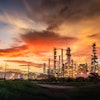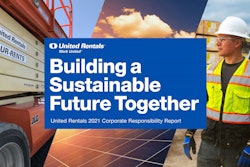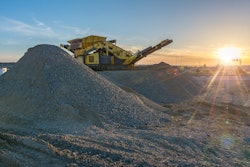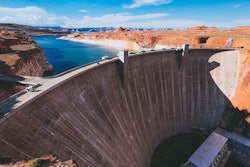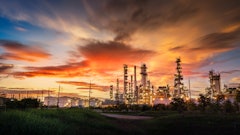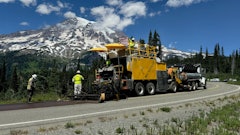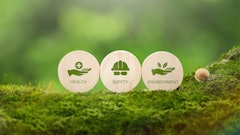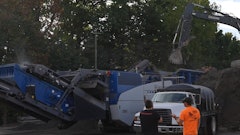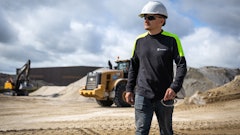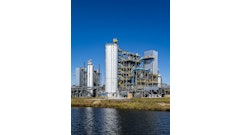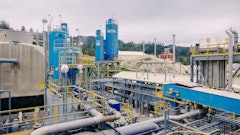
After a volatile few years marked by economic slowdown, labor shortages and supply chain disruptions, the construction industry is beginning to see some signs of improvement. That’s good news for Americans at large because the industry has a big role to play in the nation’s growth plan, spurred in part by the Infrastructure Investment and Jobs Act (IIJA). The bipartisan legislation, signed into law in November of 2021, earmarks $110 billion for the improvement of roads, bridges and other infrastructure and could create approximately 461,000 construction jobs.
Construction projects typically see an uptick in the summer and fall as warmer temperatures lend themselves to greater project efficiency. For example:
- Adhesives, paint, spackling compounds and other materials dry more quickly when temperatures rise.
- Excavation is easier with dryer soil.
- Longer daylight hours allow more time to work.
- Fewer weather delays mean fewer project interruptions.
In the spring and summer of 2022, the IIJA spurred even more construction projects by making available federal funding for improving bridges and highways, restoring waterways and other improvements. While this increased activity boosts economic recovery and improves the quality of the nation’s transportation system, the heavy construction equipment needed to make these improvements relies heavily on fossil fuels like gas and diesel, which release harmful pollutants into the air, including carbon dioxide, methane and black carbon. These harmful gases exacerbate climate change and impact wildlife habitats by contaminating the water and air, producing hydrological disturbances like flooding and droughts and leading to wildlife isolation and population fragmentation.
Work zones also cause heavy traffic delays for commuters, which increase emissions not only from construction vehicles themselves but from the cars that sit idle in these work zones. A car idling for more than 10 seconds burns more fuel and produces more emissions than stopping and restarting the vehicle.
The good news is, solutions exist today that can lessen the harmful effects of construction projects on the environment without impeding economic progress. These techniques and technologies can lower emissions, mitigate the impact on wildlife and improve project planning.
Techniques, Technologies That Lower Emissions
The global construction industry uses more diesel engines than any other sector, making it responsible for 38% of the world’s carbon emissions. Emissions are produced by the construction operations themselves as well as by the transporting of materials to and from job sites.
To lower emissions, construction companies can reevaluate all aspects of a job and consider the following changes:
- Minimize haul distances. Securing a facility close to the job site for storing needed equipment and materials reduces both time and distance required to transport supplies;
- Select vehicles that are appropriately sized for the job. By carefully selecting the right size and type of equipment for the job, project managers minimize trips from site to storage, reduce the idling time of construction vehicles and prevent unnecessary emissions.
- Try alternative fuels. Globally, companies have started swapping diesel for alternative fuels like hydrotreated vegetable oil, biodiesel and blended fuel products, which release fewer emissions without impacting performance.
- Burn fuel better. Construction vehicles’ combustion engines can be retrofitted with dual-fuel applications that replace 50% of diesel fuel with hydrogen, reducing fuel costs and greenhouse gas emissions, improving air quality and often extending engine life.
Mitigating the Impact on Wildlife
Construction directly impacts wildlife habitats near the job site. For example, the noise produced by construction activities disrupts feeding and breeding patterns — especially among animals like badgers, bats, great crested newts and birds — which disrupts biodiversity.
Steps to mitigate these disruptions include:
- Assess wildlife presence during site selection and construction planning.
- Consult with local wildlife control to determine if temporary or even permanent relocation is necessary.
- During planning, also consider the impact of post-construction ancillary development, such as new roads that may be necessary to the property.
- Retain existing habitats or recreate habitat features whenever possible.
Environmental Impact of Construction-related Traffic Delays
For every gallon of gasoline burned, 20 pounds of greenhouse gases are released into the air. Longer travel times, caused by detours, will also increase emissions.
To reduce the emissions from traffic around the construction site:
- Project managers and developers can work with local municipalities to ensure effective traffic control is taking place and strategic lane closure plans are in effect that reduce idling.
- Drivers can also do their part by using intelligent transportation warning systems to choose a fuel-efficient route when traveling to reduce traffic in the construction area.
Construction and environmental advocacy can coexist. When city/town planners and residents see that progress doesn't have to come with a hefty environmental cost, they are more willing to accept new development. When construction businesses realize that solutions are available to protect the planet without impacting their business or impeding economic growth, they can make environmental considerations part of the planning process for their construction projects.
Mitigating emissions to protect the environmental cost of large-scale development, mining and other construction enterprises is essential, but technologies that require fossil fuels for production and manufacturing contribute to the black carbon threat. By leveraging hydrogen solutions where possible in the diesel world, we can begin to stem environmental damage while working toward even more advanced construction solutions.

